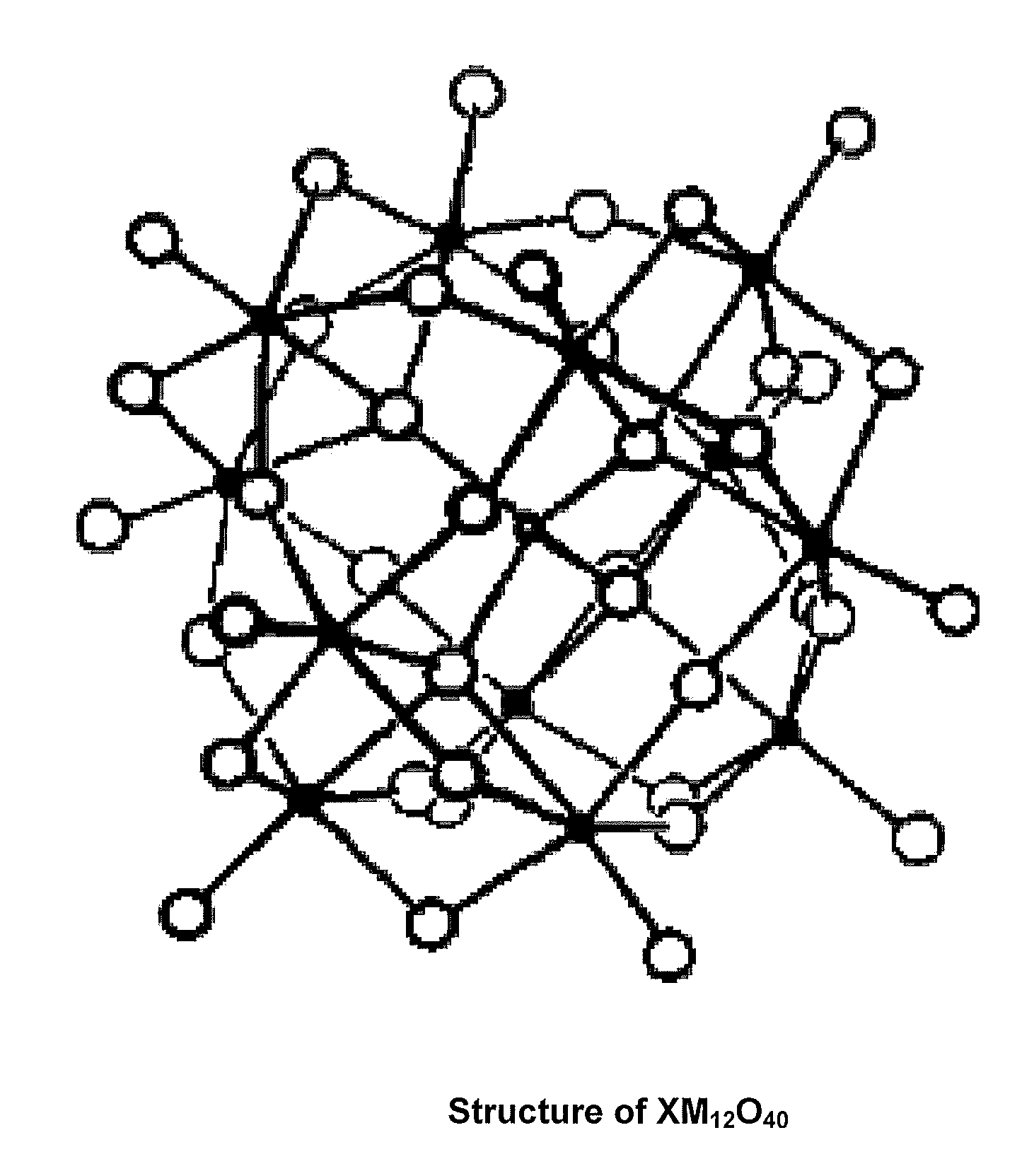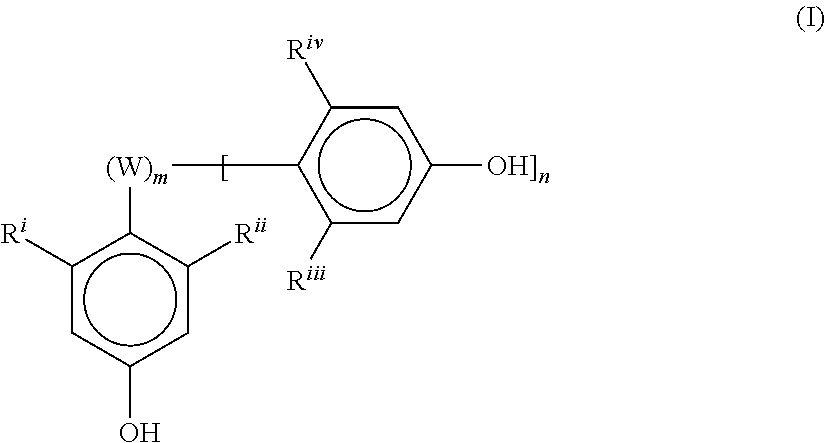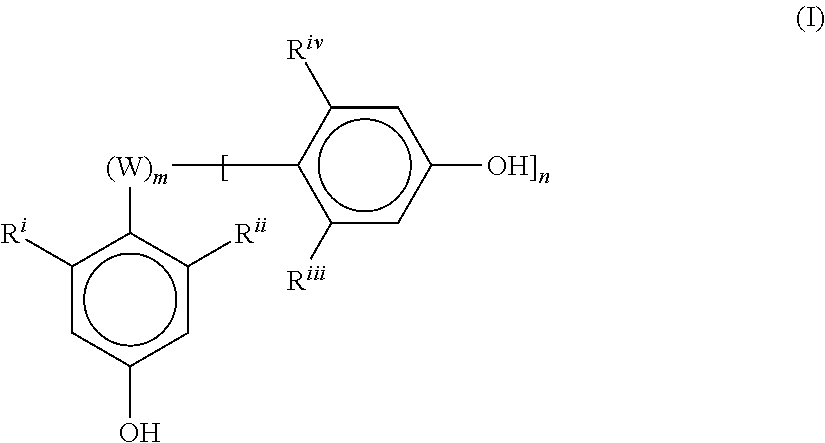Spin coatable metallic hard mask compositions and processes thereof
a technology of metallic hard masks and coatings, applied in the direction of vanadium compounds, instruments, photomechanical equipment, etc., can solve the problems of metal oxides having solubility problems, conventional soluble metal compounds to form metal oxide films, and unstable metal alkoxides,
- Summary
- Abstract
- Description
- Claims
- Application Information
AI Technical Summary
Benefits of technology
Problems solved by technology
Method used
Image
Examples
formulation example 1a
[0127]30 g of a formulation was made by dissolving 3.315 g of tungstosilicic acid (TSA) in 24.9 g of mixture of PGMEA / PGME (70:30) solvent and 1.7850 g of 9,9′-Bis(4-hydroxyphenyl) fluorene was added into the reaction vessel at room temperature. This solution was stirred and maintained at constant temperature for 5 hours, and then filtered using a 0.2 um micron PTFE filter. The spin coating was done on a Si wafer at a 1500 rpm speed. The measured total metal oxide content was 67 wt. % in coated films, as measured by TGA after baking at 300° C. for 60 s. The formulation showed some slight film roughness.
formulation example 1b
[0128]This formulation was prepared, filtered, coated and baked as for example 1 b, except that the weight ratios of tungstosilicic acid and 9,9′-bis(4-hydroxyphenyl) fluorene were changed. 30 g of formulation was made by dissolving 3.1875 g of tungstosilic acid and 1.9125 g of 9,9′-bis(4-hydroxyphenyl) fluorene in 24.9 g PGMEA / PGME solvent. This formulation's via filling performance showed much improvement over Example 1a. The measured total metal oxide content was 62 wt. % in films after baking at 300° C. for 60 s. This formulation had no detectable surface roughness.
formulation example 2a
[0129]30 g of this formulation was prepared by dissolving 3.6210 g tungstosilicic acid, and 1.4790 g poly(4-hydroxystyrene-co-methyl methacrylate) (PHSMMA) in a mixture of 1 g de-ionized water and a 23.9 g of PGMEA / PGME (70:30) solvent. This solution was reacted, filtered and coated as in Examples 1a. The measured total metal oxide content was 70 wt. % in coated films after baking at 300° C. for 60 s. This formulation showed good film quality, and via filling performance where all the vias were completely filled. The measured total metal oxide content was 67 wt. % in films after baking at 300° C. for 60 s. Other examples of this formulation at different levels of PHSMMA processed with different bake temperatures are shown in Table 1a.
PUM
| Property | Measurement | Unit |
|---|---|---|
| Ri | aaaaa | aaaaa |
| polydispersity | aaaaa | aaaaa |
| weight % | aaaaa | aaaaa |
Abstract
Description
Claims
Application Information
 Login to View More
Login to View More - R&D
- Intellectual Property
- Life Sciences
- Materials
- Tech Scout
- Unparalleled Data Quality
- Higher Quality Content
- 60% Fewer Hallucinations
Browse by: Latest US Patents, China's latest patents, Technical Efficacy Thesaurus, Application Domain, Technology Topic, Popular Technical Reports.
© 2025 PatSnap. All rights reserved.Legal|Privacy policy|Modern Slavery Act Transparency Statement|Sitemap|About US| Contact US: help@patsnap.com



